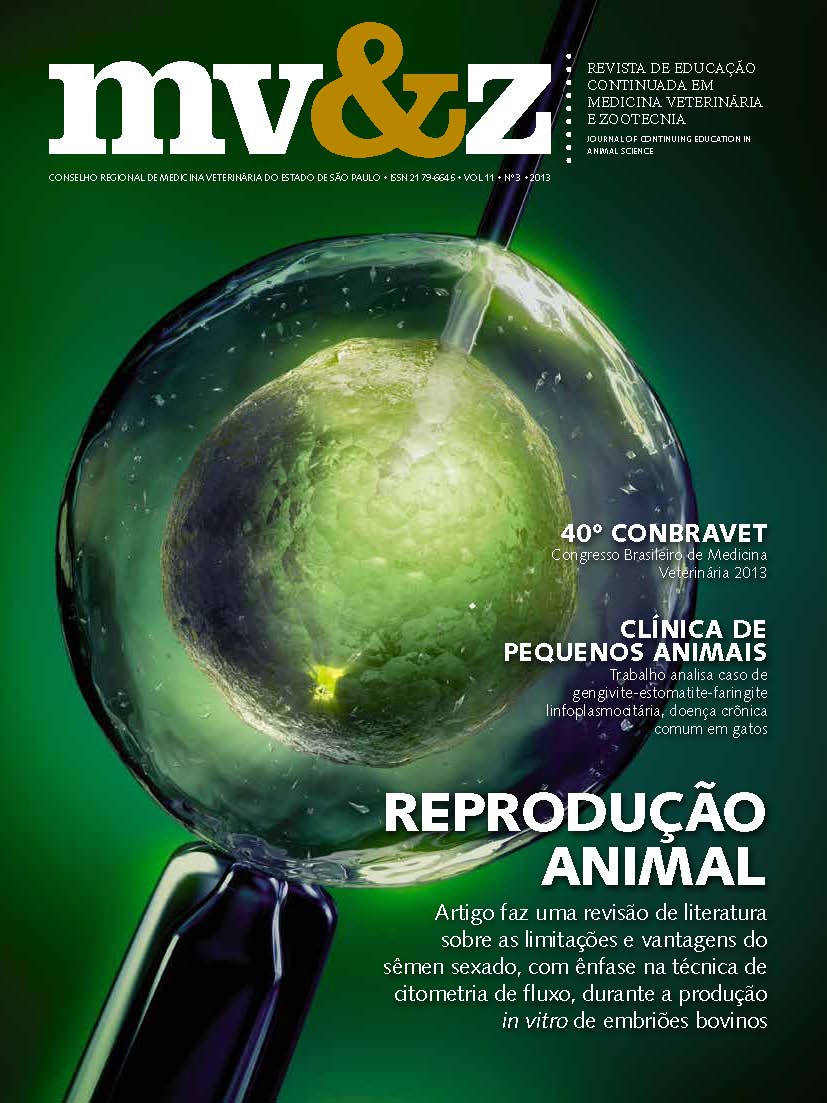Detection of rabies virus antibodies in free‐living jaguars (Panthera onca) in the pantanal of Mato Grosso, Brazil
Conteúdo do artigo principal
Resumo
The proximity to domestic animals has been considered an important cause of disease of wildlife, and has led to recent epidemics in endangered species around the world. In this study, exposure to rabies virus in eleven freeliving jaguars (Panthera onca) captured from July 2010 to November 2012 in two protected areas in the Pantanal/MT/Brazil, was screened by Simplified Fluorescent Inhibition Microtest (SFIMT) and Rapid Fluorescent Focus Inhibition Test (RFFIT). Serum sample from each jaguar was analyzed twice in different days. Considering the presence of virus neutralizing antibodies (VNA) in samples with titers = 0,10, three jaguars had low positive titers for each test performed, for a frequency of 27.3%, but only a jaguar showed rabies‐ neutralizing antibodies on both SFIMT and RFFIT (0,19/0,12 and 0,14, respectively). Low titers of VNA have been detected in other species of wild carnivores, including apparently healthy free‐living jaguars, suggesting a nonlethal infection. In our study, we could not correlate or presumed the cause of death of a jaguar that showed the highest rabies‐neutralizing antibodies and reacted on both tests. Therefore, it was not possible to infer about the possible effects of the virus in this animal health. Although some species of wild animals are known to serve as rabies reservoirs, nothing is known about wild felids as reservoirs, precluding any conclusion about the role of wild cats in the circulation of the rabies virus. Prevalence in free‐living jaguars require further investigations, as this feline specie is protected through an epidemiological peculiarity, the viral strain that occurs in jaguars must be better evaluated and epidemiological characteristics as the way of infection must be determined. Genotypic and phylogenetic analysis of rabies virus that occurs in jaguars could be interesting to clarify issue of rabies in the Brazilian pantanal.
Detalhes do artigo
Seção
1. Autores mantém os direitos autorais e concedem à revista o direito de primeira publicação, com o trabalho licenciado sob a Creative Commons Atribuição-NãoComercial-SemDerivações 4.0 Internacional
2. Autores têm autorização para assumir contratos adicionais separadamente, para distribuição não-exclusica da versão do trabalho publicada nesta revista (ex.: publicar em repositório institucional ou como capítulo de livro), com reconhecimento de autoria e publicação inicial nesta revista.
3. Autores têm permissão e são estimulados a publicar e distribuir seu trabalho online (ex.: em repositórios instituicionais ou na sua página pessoal) a qualquer ponto antes ou durante o processo editorial, já que isso pode gerar alterações produtivas, bem como aumentar o impacto e a citação do trabalho publicado (Veja O Efeito do Acesso Livre);
